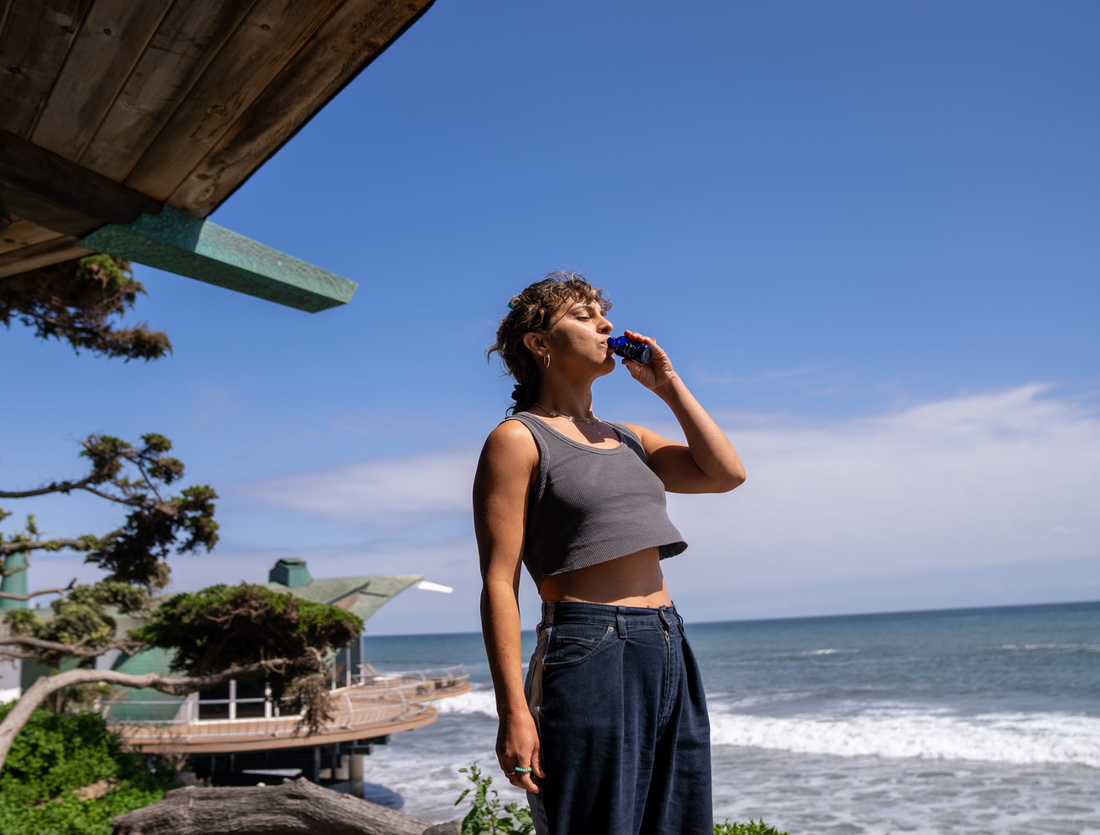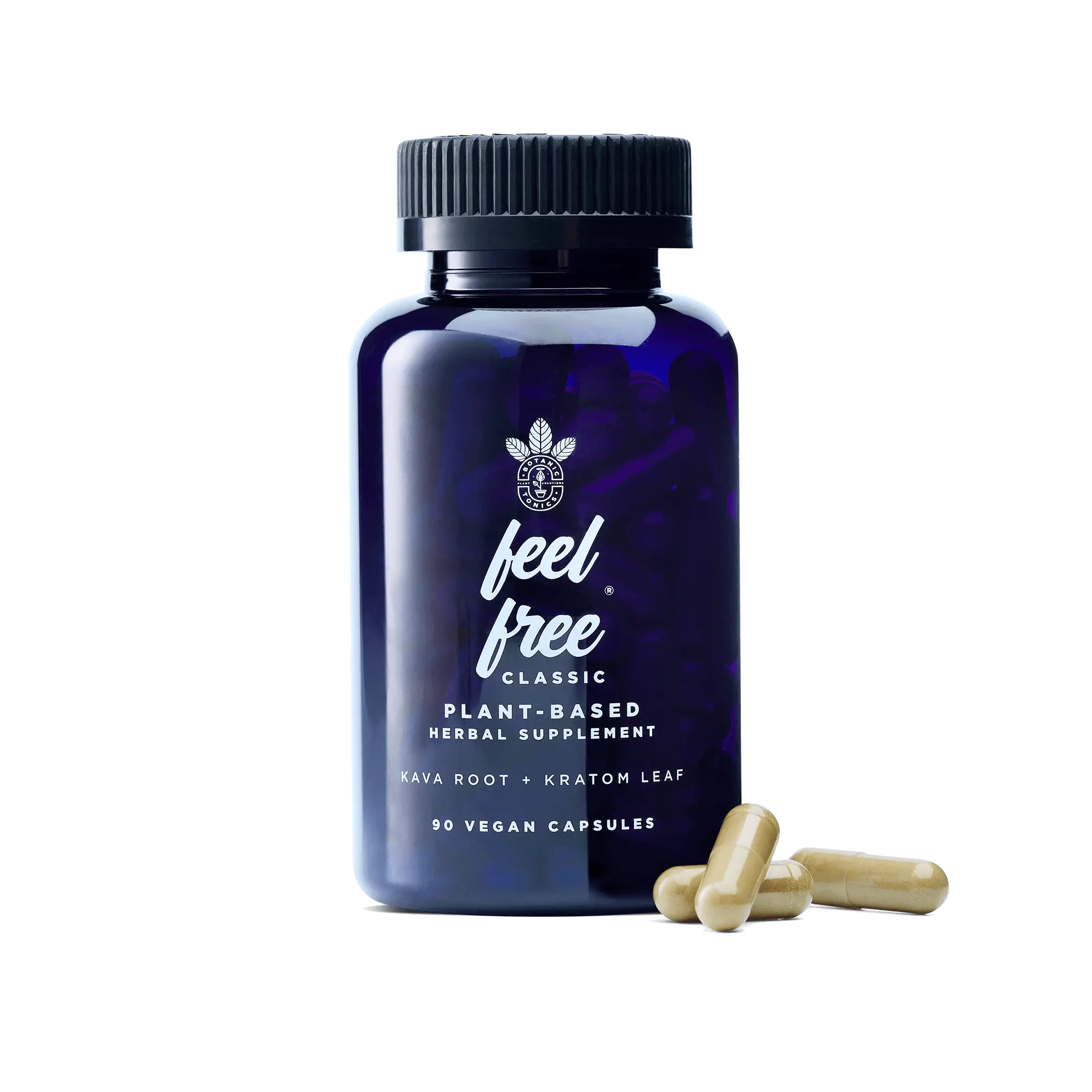Whether you're new to Kava or a seasoned enthusiast, finding the right dosage is crucial to unlock its numerous benefits. Kava is known for enhancing focus, energy, and relaxation. In this guide, we explore the factors influencing kava dosage, how to measure the right amount, and the proper consumption methods. Let's dive in and uncover the secrets to maximizing the potential of this ancient herbal remedy, kava kava.
What Are the Active Compounds in Kava?

The active components in kava tea include those called kavalactones. Our kava tonic has 260 mg of kavalactones per serving. Kava capsules have 210 mg of kavalactones per serving (70 mg per capsule). Kavalactones are a class of lactone compounds found in the kava root. Kavalactones have been studied by the World Health Organization and the National Institutes of Health.[1,2] Both organizations recognize the potential benefits of kava, including helping with occasional anxiety and insomnia.
When to Avoid Using Kava
While kava offers many benefits, it may not be suitable for everyone. Individuals with liver conditions, those taking certain medications or prescription drugs, or pregnant and breastfeeding individuals should avoid kava consumption. You should consult with a healthcare professional and seek medical advice before using kava. If you are taking medication for liver problems, talk to your doctor first and always stick to the recommended dose.
Kava (Piper methysticum) is a plant in the pepper family, native to the islands of the South Pacific. Traditionally, the root of the plant is ground and added to hot water to make a kava tea. Pacific Islanders have used kava as a type of dietary supplement for occasional anxiety and insomnia for centuries.
For more information on our kava product line, check out our YouTube videos:
- Kava 101: https://youtu.be/aFX6Dmjhd48
- Kava 201: https://youtu.be/BN3I1oL2lW8
Factors That May Affect Kava Intake
Before diving into the specifics of kava dosage, it's essential to understand the factors that influence how your body will respond to this mighty ingredient.. The type of kava, its quality, absorption rate, metabolism, and excretion can all impact the optimal dosage. Remember, everyone is different. You must take an individual approach to kava consumption to see which dosage is right for you and your body.
Kava Types
Kava comes in various forms, like powder, capsules, and tinctures, each with different strengths and effects. Two main types of kava are noble and non-noble kava or Tudei kava.
Noble vs. Tudei Kava
Kava strains are categorized by chemotypes, representing the varying ratios of kavalactones, the active compounds. There are six main kavalactones, each with distinct effects. Noble and Tudei kava have different kavalactone ratios, identified by a unique code. Noble kava is preferred due to its more desirable effects, including a stronger positive impact on mood and relaxation, with fewer side effects like nausea or headaches. Tudei kava may contain higher levels of Flavokawain B (FKB), which can have liver-toxic effects.[3] How long does kava last, typically? Tudei kava can also lead to prolonged negative side effects, likely due to slow metabolism of certain active ingredients, and its effects may last up to two days.
Absorption, Metabolism, and Excretion
Individual differences in metabolism and liver function can also influence how your body processes Kava. Factors like body weight, liver health, and the presence of other medications may affect how quickly or slowly kava is absorbed and eliminated from your system.
Now that we understand the factors affecting kava dosage, let's explore the various methods to measure and prepare kava extract for consumption.
See related: Can You Drink Kava Everyday?
How to Determine the Right Amount of Kava for You
Finding the optimal kava dosage is a personal journey that depends on your body weight, tolerance, and desired effects.
- Based on Your Weight: As a general guideline, the World Health Organization suggests starting with 0.2 to 0.3 grams of Kavalactones per kilogram of body weight per day. Beginners should begin with the lower end of the range.[4}
Doses of Raw Kava Powder Based on the Desired Dose and Strength of Kava[5]
|
Dosage |
Target Kavalactone Dose |
Weak Kava Dose (3%) |
Average Kava Dose (8%) |
Very Strong Kava Dose (20%) |
|
Low Dose Range |
70 – 140 mg |
20 – 40 grams |
10 – 13 grams |
4 – 7 grams |
|
High Dose Range |
200 – 250 mg |
60 grams |
20 – 30 grams |
10 – 13 grams |
- Based on Desired Effect: The effects of Kava can vary depending on the dosage. Lower doses are associated with increased alertness, while higher doses promote relaxation and may even induce sleep. Experiment with different dosages to find what works best for you.[5]
What Strength of Kava Dose Should I Use?
The desired dosage strength depends on your individual preferences and the reason for using kava. For sedative effects, a higher dosage is generally required. For more euphoric or stimulating effects, try opting for a lower dose in a kava tonic or capsule.
General Dosage Recommendations By Desired Effects[5]
|
Effects |
Low Dose Kava (70 – 140 mg) |
High Dose Kava (200 – 300 mg) |
|
Desired Uses |
• Promoting creativity • As a daily health supplement • For mild to moderate anxiety • For social gatherings • For meditation |
• For moderate to severe anxiety • Insomnia or sleep disorders • For deep meditation • For muscle tension and tightness |
|
How it Feels |
• Mildly euphoric and clear-headed • Intense focus and concentration • Relaxed and calm • May feel slightly energized or slightly relaxed |
• Euphoric and relaxed • May feel like falling asleep • Couch-lock, heavy sensation • Carefree and unmotivated |
|
Most Common Side-Effects |
• Not likely to produce many side-effects in the short term • The most common side-effect is fatigue • Not likely to experience any “hangover” symptoms |
• More likely to produce side-effects • May experience skin irritations • The most common side-effect is oversedation • Can feel groggy the following morning |
How to Take Kava
To get the most out of your kava experience, it's essential to understand the proper way to consume it.
- Traditional Preparation: In traditional cultures, the kava plant is often prepared by kneading and straining the root powder in water. This creates a kava tea beverage that is then consumed during ceremonies.[6]
- Instant kava: For a more convenient option, instant products can be mixed with water and consumed directly to make a kava shot.
The effects of kava may include:
- Numbing sensation in the mouth
- Feelings of contentment and relaxation
- Heightened sight and smell senses
- Muscle weakness and relaxation
- Feeling extra light or extra heavy
- Very high doses can cause drowsiness
If you don’t feel any effects of the kava after about two hours, it’s safe to take another dose.
Where Does Botanic Tonics Source its Kava?

The kava used in our feel free CLASSIC tonic is of the noble variety sourced from Vanuatu, a country in the South Pacific. In addition to careful research and sourcing, Botanic Tonics’ quality department tests every batch of kava for pesticides, trace heavy metals, mycotoxins, and aflatoxins, and for bacterial contamination.
To learn more about where we source our Kava, watch our YouTube video: https://youtu.be/4nk4UeUFejk
feel free Botanic Tonics Product Consumption Guidelines

When trying a kava shot for the first time, we recommend starting with a conservative approach to gauge your body's response. Begin with only half a shot of feel free, which is equivalent to 1 ounce of the 2-ounce bottle of feel free tonic.
feel free CLASSIC tonic includes the following herbs: noble kava root extract (standardized to provide 260 mg kavalactones per serving), sourced from Vanuatu, and leaf kratom (standardized to provide 34 mg alkaloids per serving) sourced from Indonesia. In addition to these botanicals, the tonic includes pineapple juice, stevia leaf, citric acid and other natural flavors. CLASSIC tonic is sold in a 2 oz. bottle, which includes two servings. The recommended maximum daily serving is one bottle. The benefits of our kava tonic can be felt in as little as 10-15 minutes and last 3-4 hours.
feel free CLASSIC capsules launched in late 2022. The herbal ingredients in feel free supplements are leaf kratom and kava root extract. Each capsule contains 11mg of alkaloids from leaf kratom and 86 mg of kavalactones from kava root extract. The recommended single serving size is 3 capsules - with directions not to exceed 6 capsules per day. The benefits of our capsules can be felt in as little as 30 minutes and last 3-4 hours.
References:
- Sage Journals. De-mythologizing and re-branding of kava as the new ‘world drug’ of choice. https://journals.sagepub.com/doi/full/10.1177/2050324519876131
- National Library of Medicine. Kava for the treatment of generalised anxiety disorder (K-GAD): study protocol for a randomised controlled trial. https://pubmed.ncbi.nlm.nih.gov/26527536/
- Healthline. Kava Kava: Benefits, Side Effects, Dosage, and Interactions. https://www.healthline.com/nutrition/kava-kava.
- Food and Agriculture Organization of the United Nations. FAO Model Code of Forest Harvesting Practice.https://www.fao.org/3/i5770e/i5770e.pdf.
- KavaGuides. Kava Dosage: How Much Should You Take?
- Wyostays. Exploring the History, Culture, and Benefits of Kava: An In-Depth Look at the Traditional Pacific Islander Beverage. https://www.wyostays.com/exploring-the-history-culture-and-benefits-of-kava-an-in-depth-look-at-the-traditional-pacific-islander-beverage.
















